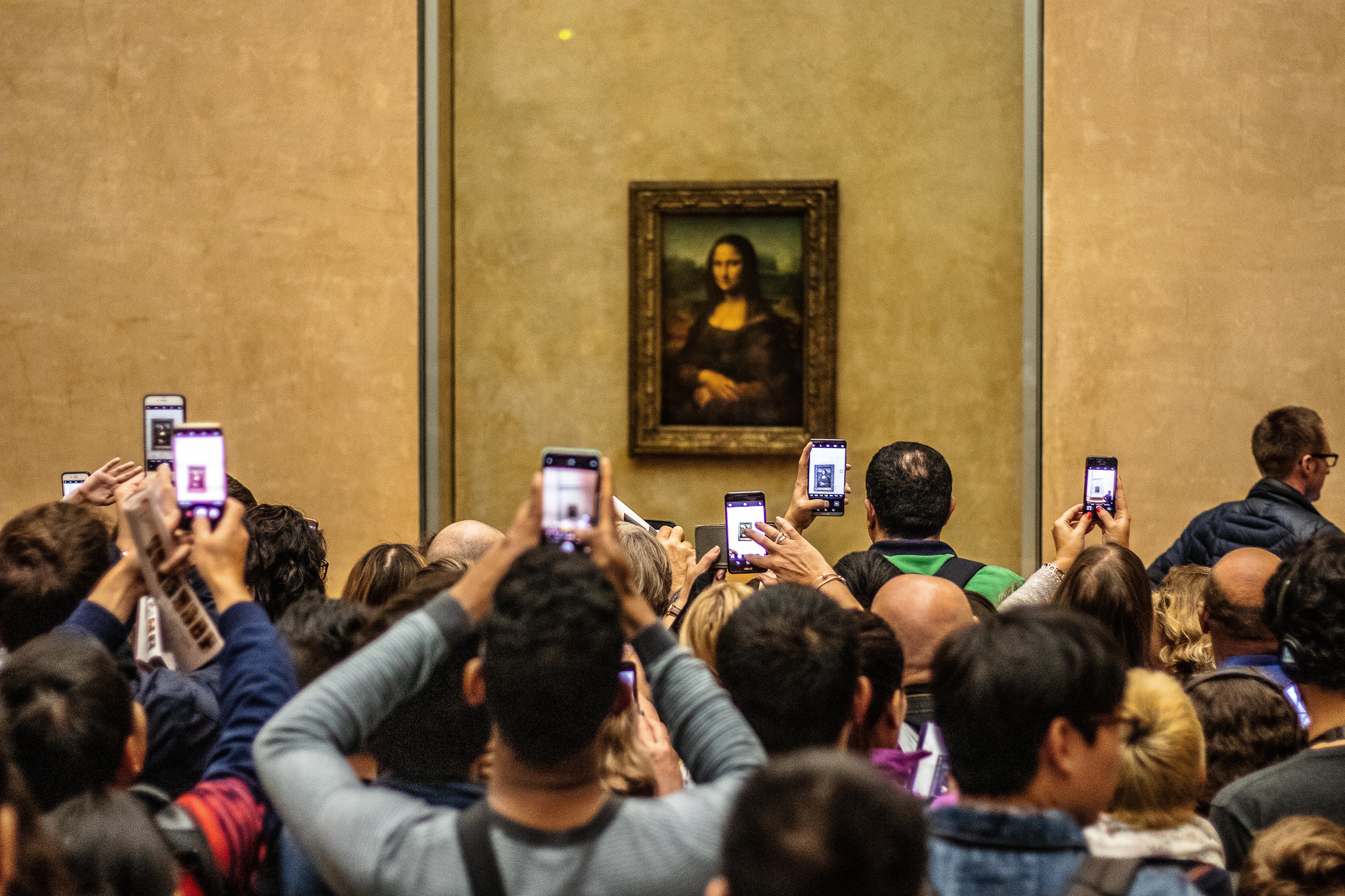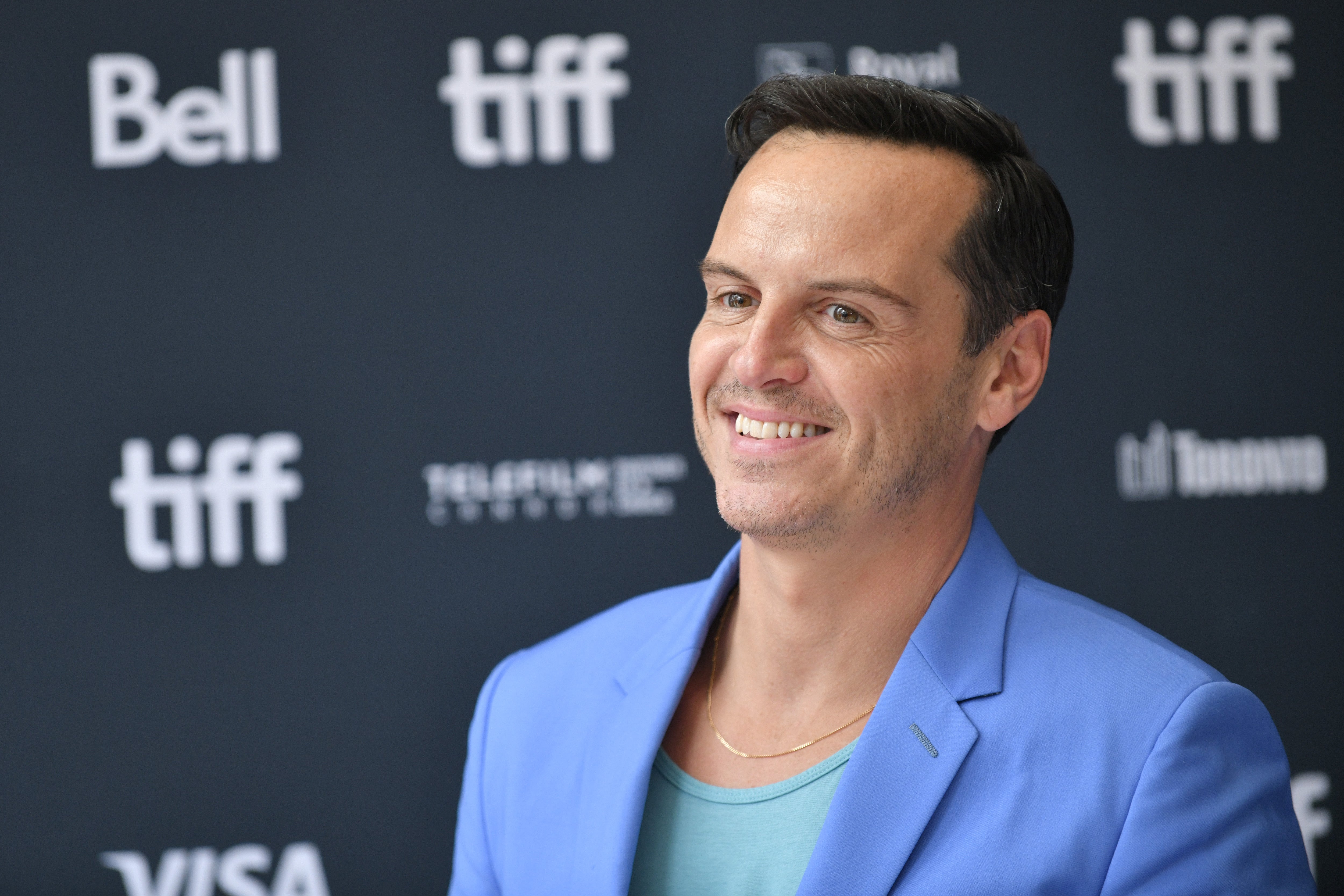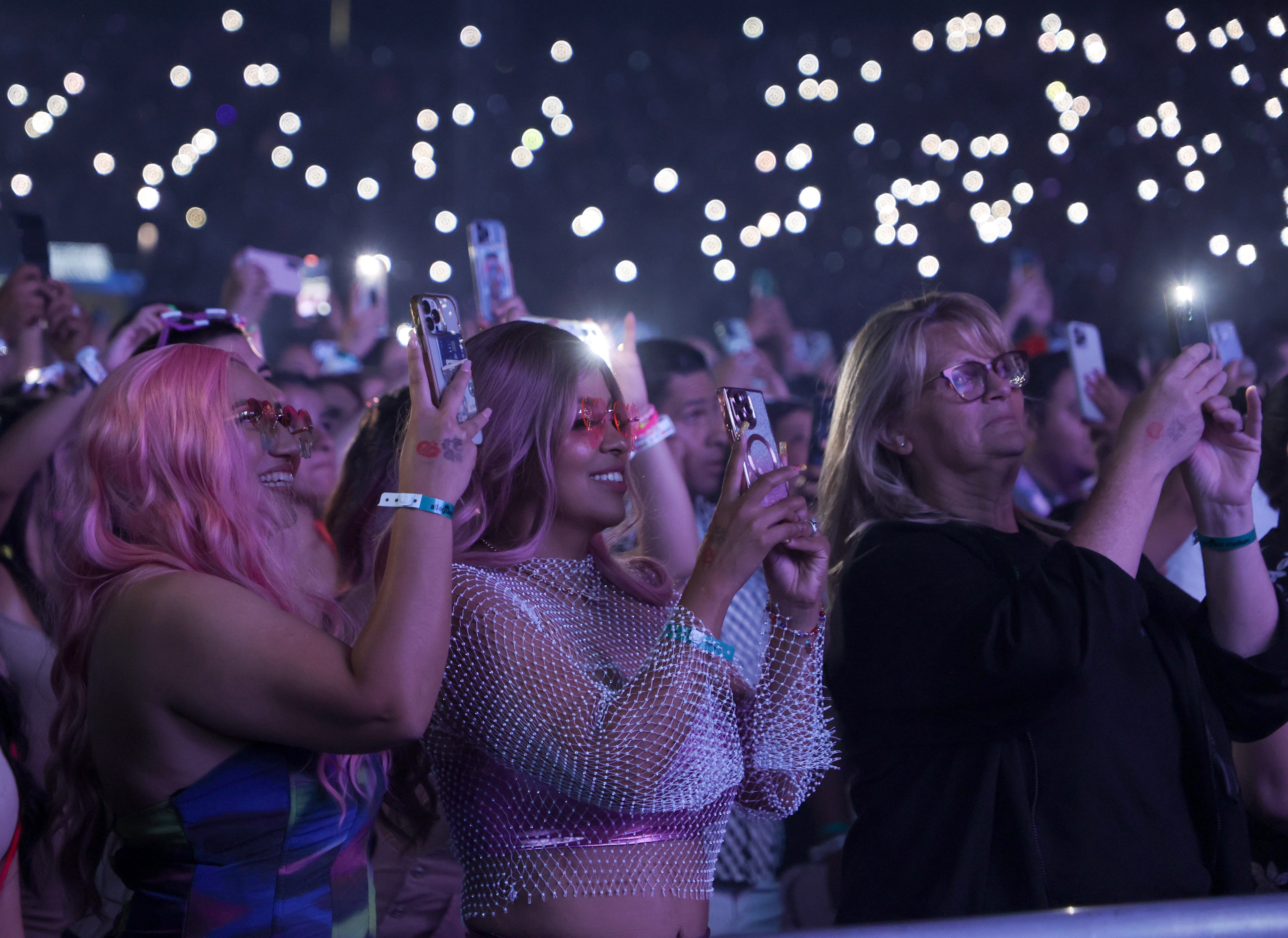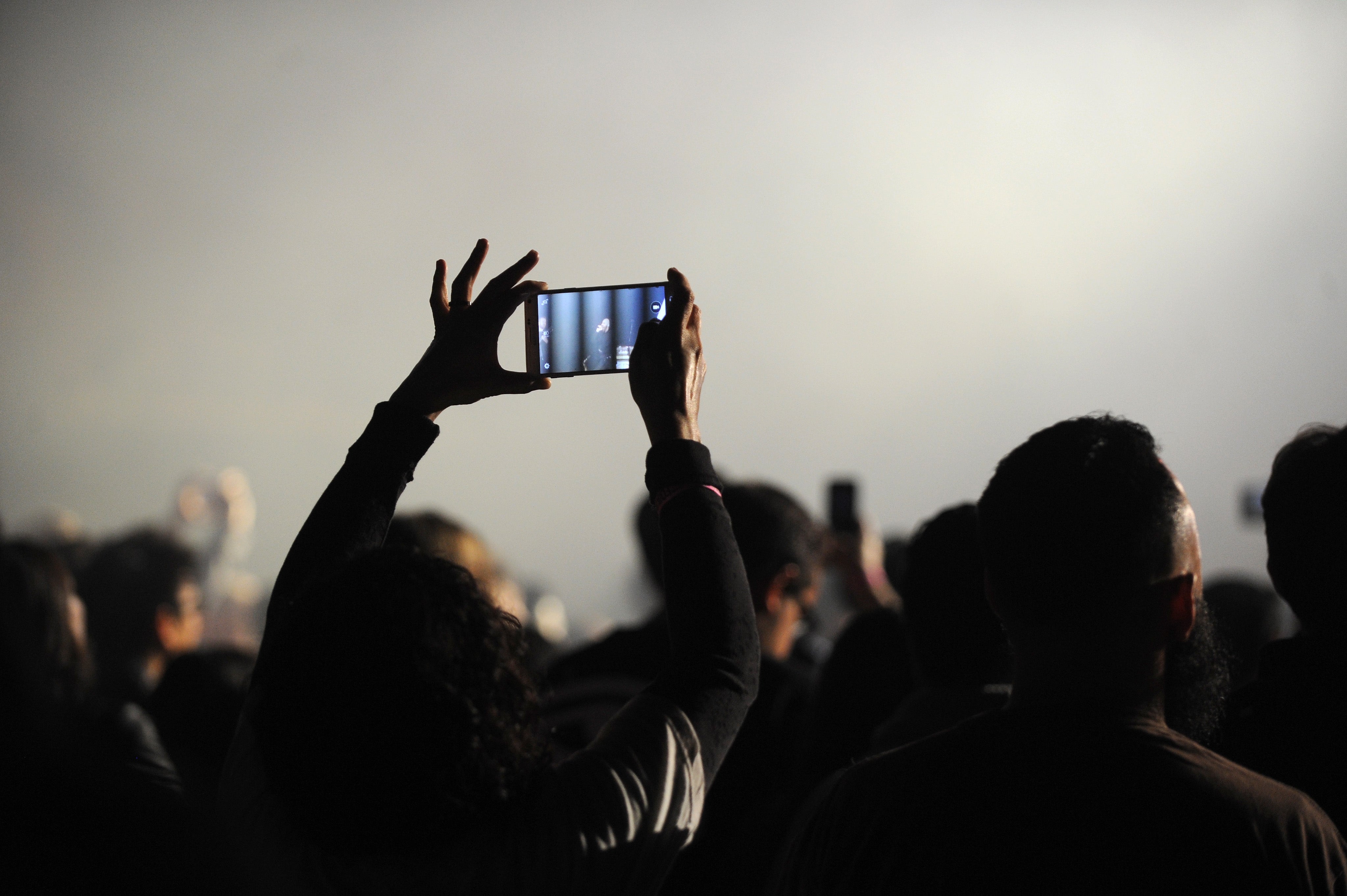Going to an art gallery or to a gig? Prepare to meet the iMorons
Bands and actors are calling time on people who can only experience a performance while filming it or sending emails. Too right, smartphones are rotting our cultural fabric, says Mark Beaumont

You can understand the thought process. “To be or not to be, that is the question,” mused Andrew Scott from the stage, facing down literature’s most incisive existential quandary. “B2B?” thinks the bloke in row J, “oh bugger, I forgot to email Len from distribution”, as he whips out his MacBook and, mid-soliloquy, sets about tidying up some light admin.
Such was the scene, according to Sherlock and Fleabag actor Scott, when he stopped a performance of Hamlet at Islington’s Almeida Theatre in 2017 because someone was working on their laptop at the play’s most pin-drop moment. “I was pausing and [the stage crew] were like, ‘get on with it’,” he told the Happy Sad Confused podcast last week. “I was like, ‘There’s no way.’ I stopped for ages.”
Scott isn’t the only screen-dazzled thesp who has railed against technology destroying the magic of theatre. During another performance of Hamlet in 2015, Benedict Cumberbatch lashed out at audience members filming on their phones, describing it as “mortifying” that the dredging of his very soul was being reduced to a tawdry #Cumberbard hashtag. Playing Macbeth in 2013, James McAvoy made it clear he’d bring Great Birnam Wood down on the Dunsinass of whoever was filming him on their mobile. “The theatre is very much an engaged and a collective experience,” Line of Duty’s Adrian Dunbar told The Times this week. “Sometimes it’s people who haven’t been to the theatre before who just don’t get it. They don’t know about the fourth wall.”

That these Trigger Happy TV sketches have come true in the modern age is indicative of the sorry state of cultural experience in 2024. We’ve become so psychologically dependent on our phones, so surgically attached to them, that it’s destroying our ability to properly engage in the arts.
Regular gig-goers among us have been dealing with a fourth wall of our own for years now. That which shoots up in gleaming 4K Super Retina XDR the second the big hit we’ve been waiting all night for arrives. It’s long been enraging to have life’s musical highlights fragmented into a barricade of hundreds of impossible-to-ignore phone screens, like you’re suddenly getting a bluebottle’s eye view of Doja Cat. Rather than become lost in a transportive connection between artist and fan, we’re forced to experience gigs second-hand, through the wobbly Android of someone who, after that many pints, would struggle to hit a urinal straight let alone artfully frame a mise-en-scène.
Such is the sense of electronic entitlement that the biggest iMorons are now lobbing their phones at artists including Bebe Rexha and Lil Uzi Vert on stage in the hope of an exclusive selfie, only to be somehow surprised when said artist either hoofs it towards the mixing desk or gets stretchered off with concussion. Art fans, too, have long complained about tourists defying bans on flash photography to turn a viewing of the Mona Lisa into something resembling a 16th-century Chemical Brothers gig. And that’s if you can claw your way through the forest of phone-filmers for whom documenting their proximity to great art – and boasting about it online later – is more important than actually looking at it.

According to 2023 figures from Data Reportal, UK users spend almost three hours per day on average on their phones, rising to 3hrs 46mins worldwide, and who can blame them? The urge to exist through our devices is a natural (if boardroom-bred) phenomenon. A real world of pure horror and adversity – of war, cost of living crises, rent slavery, nuclear threat, global warming tipping points toppling daily, and Laurence Fox – is far more disheartening to face up to than the one in our pockets. Our phones offer distraction, reassurance, casual tittle-tattle, Traitors spoilers, constant connection to world events and cultural sustenance often without even the touch of a button.
But for all their comforting convenience, they are increasingly agents of artistic dislocation. That removal of direct agency – that “up next” emancipation from the hassle of choice – has already hobbled the evolution of music. There are ITV scandal dramas yet to be commissioned about the homogenising effects that phone streaming has had on pop culture; stylistically, mainstream music has virtually stagnated since algorithms became the dominant source of passive consumption, funnelling ceaseless torrents of listeners towards whatever’s already popular. Take a look down the lists of major award winners and biggest-streaming acts for the past 10 years or so and you’ll find them about as varying as Dave’s roster of panel show comedians, while leaping onto the latest TikTok phenomenon is a bit like swapping Evian for Volvic. The name’s different but it still tastes like water.
Progress, or declining cultural entropy? Either way you look at it, we’ve come to trust smartphones with our musical identities, allowing them to assist, recommend and guide us effortlessly towards more of what they know we already like. They’re our artistic PAs, gatekeepers and personalised DJs; no wonder they’re the first things we reach for when wanting to share a memorable piece of art or performance with someone (or something). Hence the insatiable need to document cultural experiences on mobile phones is endemic in Gen Zers. A 2022 study by OnePoll found that gig-goers spend an average of 14 minutes videoing every gig they see and 45 per cent of 18-24-year-olds wouldn’t even go to the concert if they couldn’t video it. The phrase “pics or it didn’t happen” has become a generational mantra.
The second we give in to the lure of the cinematic zoom mode, though, we set ourselves one remove from the experience. With your arm in the air keeping a steady shot, you’re not dancing, moshing or forming the structural foundation of a human pyramid. You’re no longer a participant, you’re paparazzi. On the very few occasions I’ve felt the urge to film a song – I mean, Blur playing “Parklife” at their reunion gig at Colchester Arts Centre, think of the likes – I’ve spent so many seconds of valuable knees-up time clicking the camera app, checking settings and making sure I’m not videoing the lighting rig by mistake that by the time I’ve captured the moment to watch later, I’ve missed the chance to watch it while I was there.

Around a quarter of those polled by Onepoll even admitted they suffer from “charge anxiety” at shows, struggling to enjoy a gig for fear of their battery running out and being unable to video the encore. The enjoyment is literally being drained from their evening through their lightning port. And they’re not bothered that they’re turning a live performance into a cold, motionless film set for everyone else either: almost half of those aged 18-24 don’t care if their phone is blocking anybody else’s view. The self-centred self-gratification that phone life has engendered in us has clearly, for many, superseded both in-the-moment appreciation and any sense of consideration for others. With our phones aloft at every performance we are all, now, Shania Twain wearing a gigantic polka dot hat to the Grammys.
Artists have tried to fight back against the technological tide before. Last September singer-songwriter Lucy May Walker went viral with a suggested list of “gig etiquette” which politely advised fans to “take a few pictures/videos [but] don’t block someone else’s view and try not to watch the whole thing through your phone”, much to the fury of those who felt that by buying one ticket they’d purchased the entire show for themselves. Savages and The Afghan Whigs have displayed no-phones signage and many acts such as Yeah Yeah Yeahs have asked audiences from the stage to keep their phones in their pockets. Which usually works for about 10 minutes, or until the next big hit comes along.
If we’re so hopelessly bodily attached to our phones that we’ve forgotten how to live our cultural lives – and it’s ruining events for everyone – then perhaps the only solution is amputation. Jack White has been among the artists pioneering the use of lockable pouches for phones during events; you keep your device with you but you can’t Hinge anybody until it’s unlocked at the exit. If Diane drinks the poisoned rosé on The Traitors while you’re in there, you’ll just have to wait until curtain to find out about it.
It can feel like losing a limb, you might never see your friends again and your crypto price anxiety goes through the roof. But what you see at such gigs is people fully engaged with the show, lit up by the music rather than their screens, making a memory – rather than an Insta post – that’ll last forever. To prove you’ve been there or to really be there, that is culture’s 21st-century question.






Join our commenting forum
Join thought-provoking conversations, follow other Independent readers and see their replies
Comments